Will It Work? Lessons learned from a sailing retreat in the Caribbean
Jan 19, 2021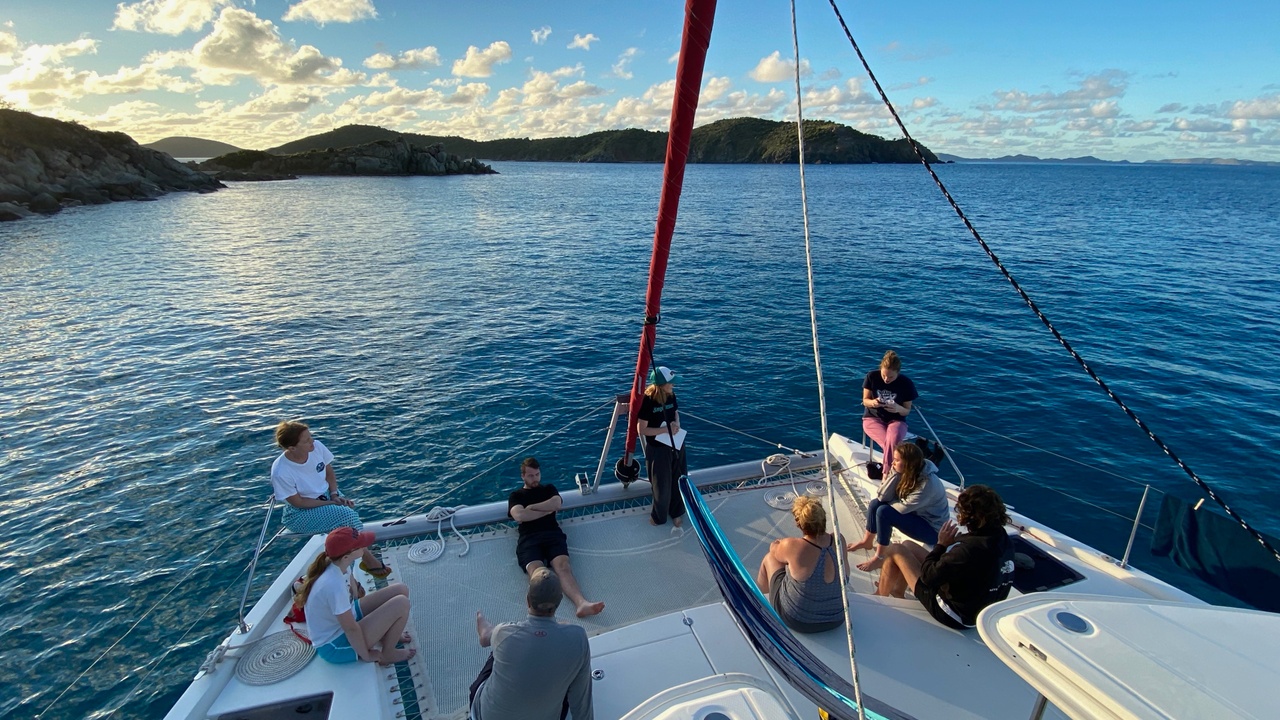
The sailing wasn’t an issue. I knew how to sail. The boat was clean, our provisions were aboard waiting to be stowed, and I would get a walk through of all the controls and systems before casting off. Emily also knew what we would be sharing. We’d created our online course, Love Your Life, and it was available to anyone. But this was the first time we would combine teaching it live with the hands-on experience of sailing. I was grateful our friend, Whitney Johnson, and her family were game to join us for this maiden voyage. She’d also invited her dear friends, the Petersons, to join us. We looked forward to meeting them.
It had been six years since I’d sailed in the British Virgin Islands. This would be our fourth trip here. We got to the marina where we’d been many times before. It had been rebuilt since hurricane Irma. The main difference was everyone wearing masks. We’d done the whole quarantine coronavirus thing.

The Petersons had one more day of quarantine before they could join us. The Johnsons were already at the dock. We met for lunch at the marina restaurant, an open air space with no walls beneath a vaulted roof. All the other tables were empty. It felt good to socialize again. After bundling up in New York City and standing in outdoor lines to get covid tests, wearing masks on our flights and then keeping to ourselves in our quarantine spots, we could look each other in the eyes, take off our masks, eat, talk and smile. This was good.
In the course of this trip we would do seven things over and over again:
- Choose an island
- Chart a course
- Cast off
- Navigate out of the harbor
- Set our autopilot
- Trust our compass
- Drop anchor
Every day we visit a different island. We learned this process while living aboard our boat. More importantly, we learned it’s significance after we got home. Once we articulated these steps, understood their significance and applied them to our current hopes and dreams, things really took off. This was what we were sharing with our friends and soon-to-be friends.
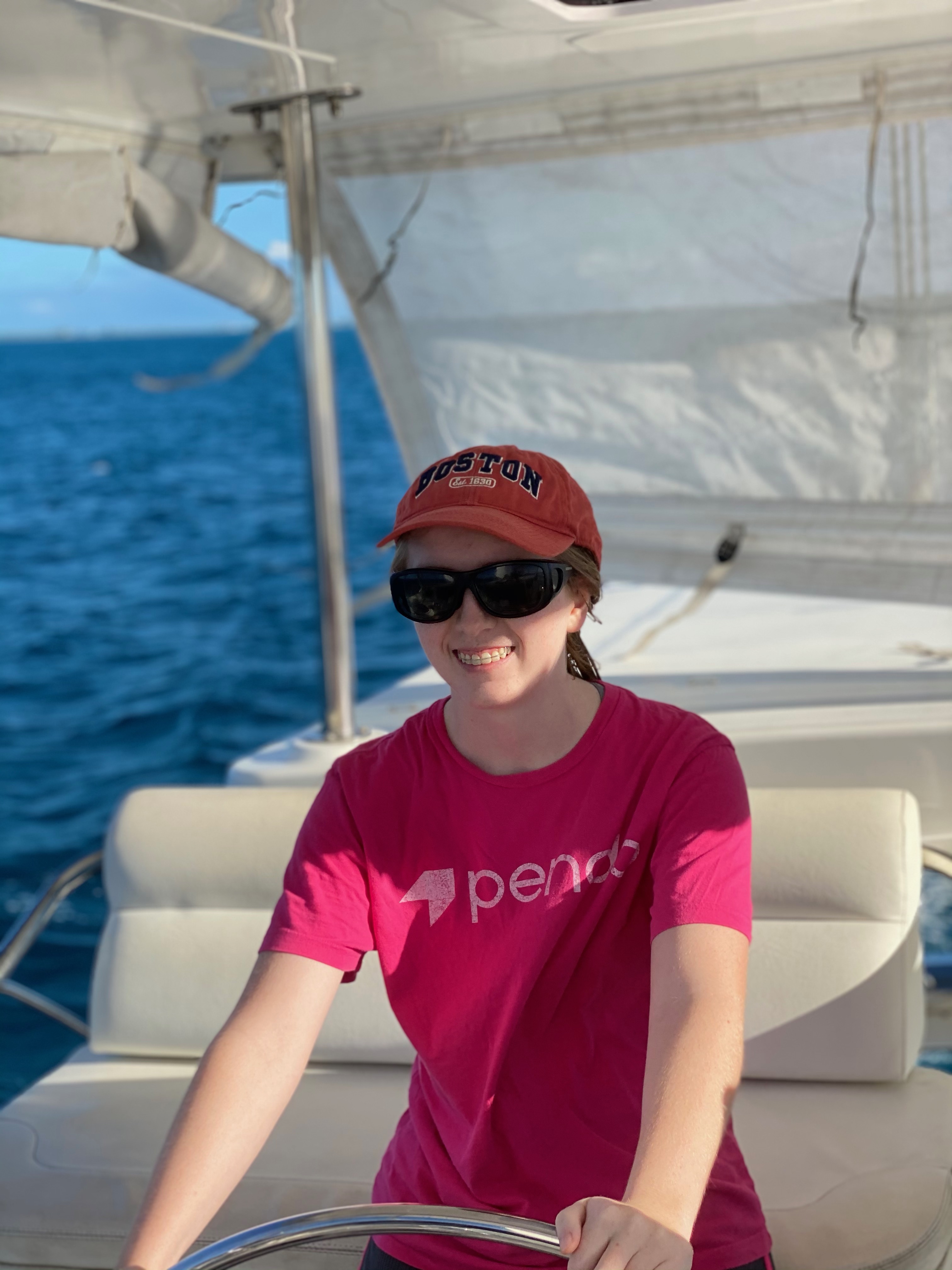
We chose Norman Island as our first stop. Norman Island has a storied past as an actual pirate hideaway where they buried treasure. It was southeast of Tortola, where we were starting. This made it convenient to pick up the Petersons the next day once they were done with quarantine. The Johnsons, Whitney, Roger and their adult children, David and Miranda, helped cast off the docking lines as we eased out of our slip and into the channel. Once out into open water we raised the sails and pointed the bow southeast. I turned off the engines and we were sailing. We arrived at sunset and picked up a mooring ball. We were at anchor. We’d done all the steps. After a harty dinner, lovely conversation and quiet time looking at the stars, I went below and went to bed. It felt good to lay in bed and feel the gentle rocking of the boat lulling me to sleep.
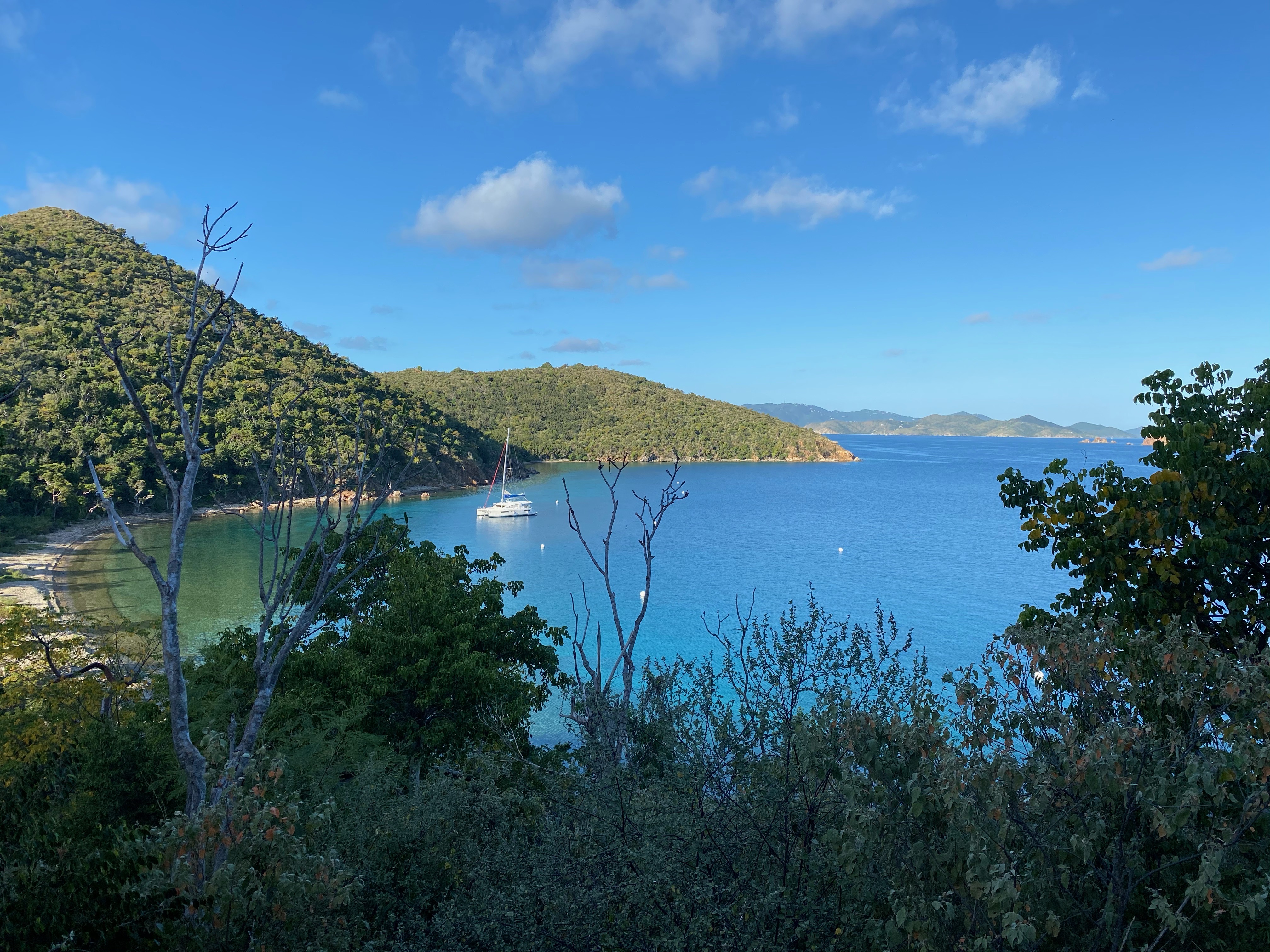

We were up early. Everyone wanted to go ashore and explore the island. I knew there was a trail leading to the ridge. I just didn’t know where it started. We tied the dingy to a log on the beach and everyone was game as we bush wacked straight up the hillside in search of the trail. After scratching and scraping our legs and getting a little dirty, the brush opened up onto the trail. We stayed on the trail continuing up. Cresting the ridge, the Atlantic Ocean came into view. The morning was cool, but the sunrise was a welcome blanket of warmth. I love seeing the open ocean come into view. We hiked over to the neighboring Soldier Bay and back. Everyone was feeling good. We moved the boat to another spot, The Indians, where we all got to enjoy impeccable snorkeling. Then it was time to head back to Tortola to pick up the Petersons. We met them at a marina near the police station, where they drop off your quarantine tracker and were officially free to move about the territory. With the whole crew aboard, it felt like we could really dig in and get started.
We sailed north to The Dogs, three remote, craggy islands each with “Dog” in their name. The Petersons were so happy to be out of quarantine that, once at anchor, they all immediately jumped into the water. We swam, climbed and explored until sunset. We settled in for a tasty taco dinner and then gathered in the rear salon for some conversation. Emily and I leaned our backs against the sliding glass doors, looked into all the expectant faces and jotted down some ideas as we shared what we hoped everyone would gain for our time together on the water.

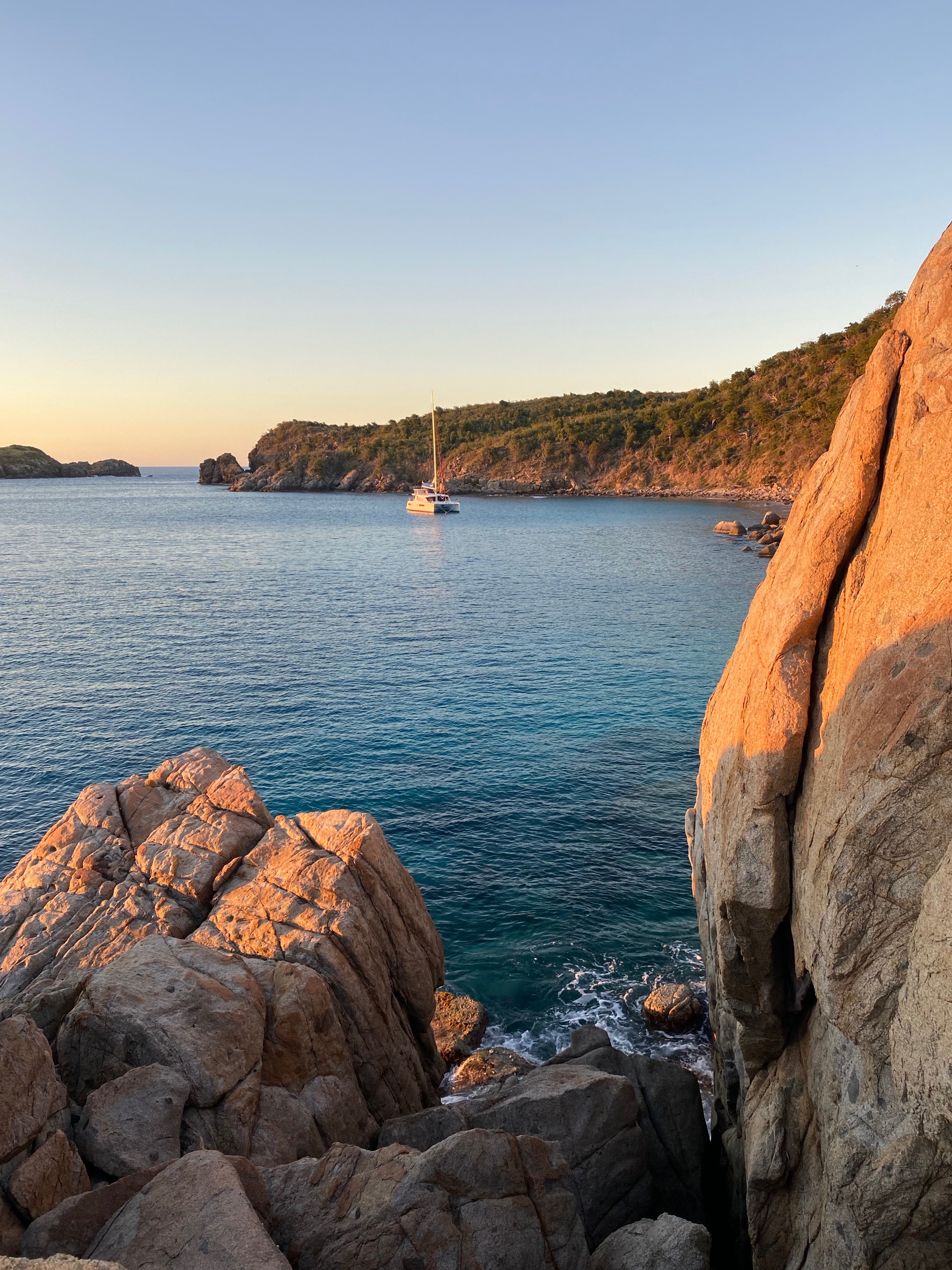
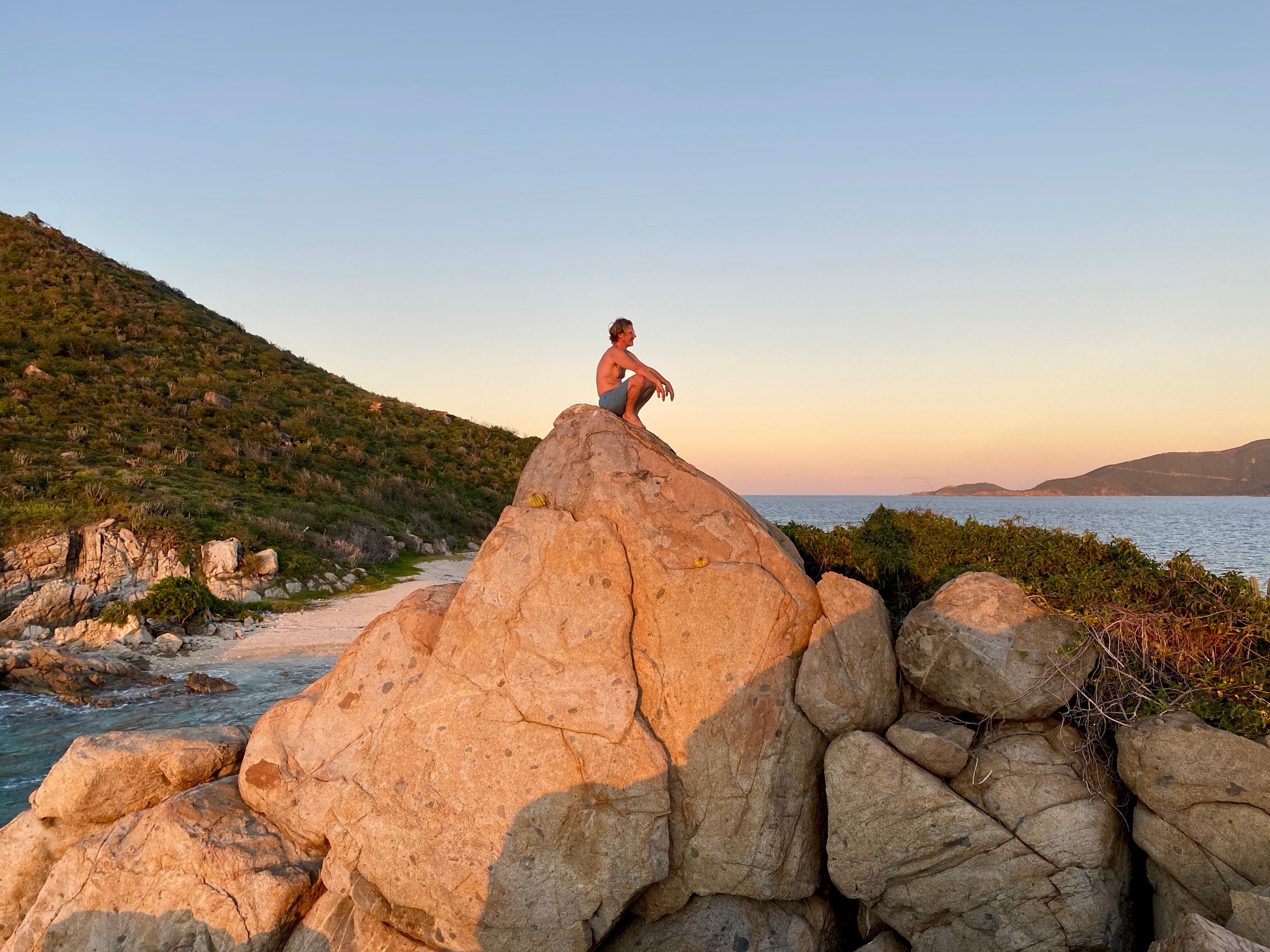
While in quarantine we’d sent everyone some questions to consider. It was wonderful to hear the Johnsons and Petersons as they shared their thoughts, insights and hopes for their own lives and their families. We all nodded, laughed, connected the dots and encouraged each other. This was working. We were all tired. It had been a big day. We needed our rest because tomorrow we were sailing over the horizon to Anegada.
Anegada has held some allure for me for some time. This was my fourth trip to the British Virgin Islands, but I’d never been to Anegada. It was the most remote island of the BVI’s and was a completely differently kind of island. The others are hilly and vegetated, made up of left over volcanic activity. Anegada is massive, flat bar of coral that sits just a few feet above sea level. I wrote about Anegada in our book Seven at Sea. On our first trip to the BVI we opted to go to the Baths instead of Anegada. I decision I do not regret one bit. On our second trip, I was a new captain, unsure of myself. I’d never sailed toward something I could not see. We headed north, away from the main island chain toward Anegada. Once the tips of the trees came into view and the island started to take shape, I knew we could make it. I’d sailed over the horizon and discovered what I couldn’t see before. But we turned back and headed to other islands we also wanted to visit during our short trip. The third time in the BVI was with our kids. We were living aboard our own boat. Getting to the BVI’s had been a hard won voyage. We sat at anchor in Virgin Gorda Sound, the most northern bay before casting off toward the lone island of Anegada. We sat around as a family and discussed what we wanted to do. We’d done plenty of excursions and out-and-back trips to various islands in the Caribbean. We’d seen dozens of beautiful white sandy beaches. (Anegada is mostly famous for its lobster and endless miles of white sandy beaches.) After many months on the water, we decided it was time to move the boat toward home. Anegada would have to wait for another time.

That morning we cast off and sailed toward the horizon. The wind came from the east, the sails were in full bloom and we moved steadily north, enjoying a comfortable, pleasant sail as—once again—the tips of the trees came into view, then the tops of the few buildings on the island, then the island itself. We navigated into the harbor, picked a spot with lots of space and sand and dropped anchor.
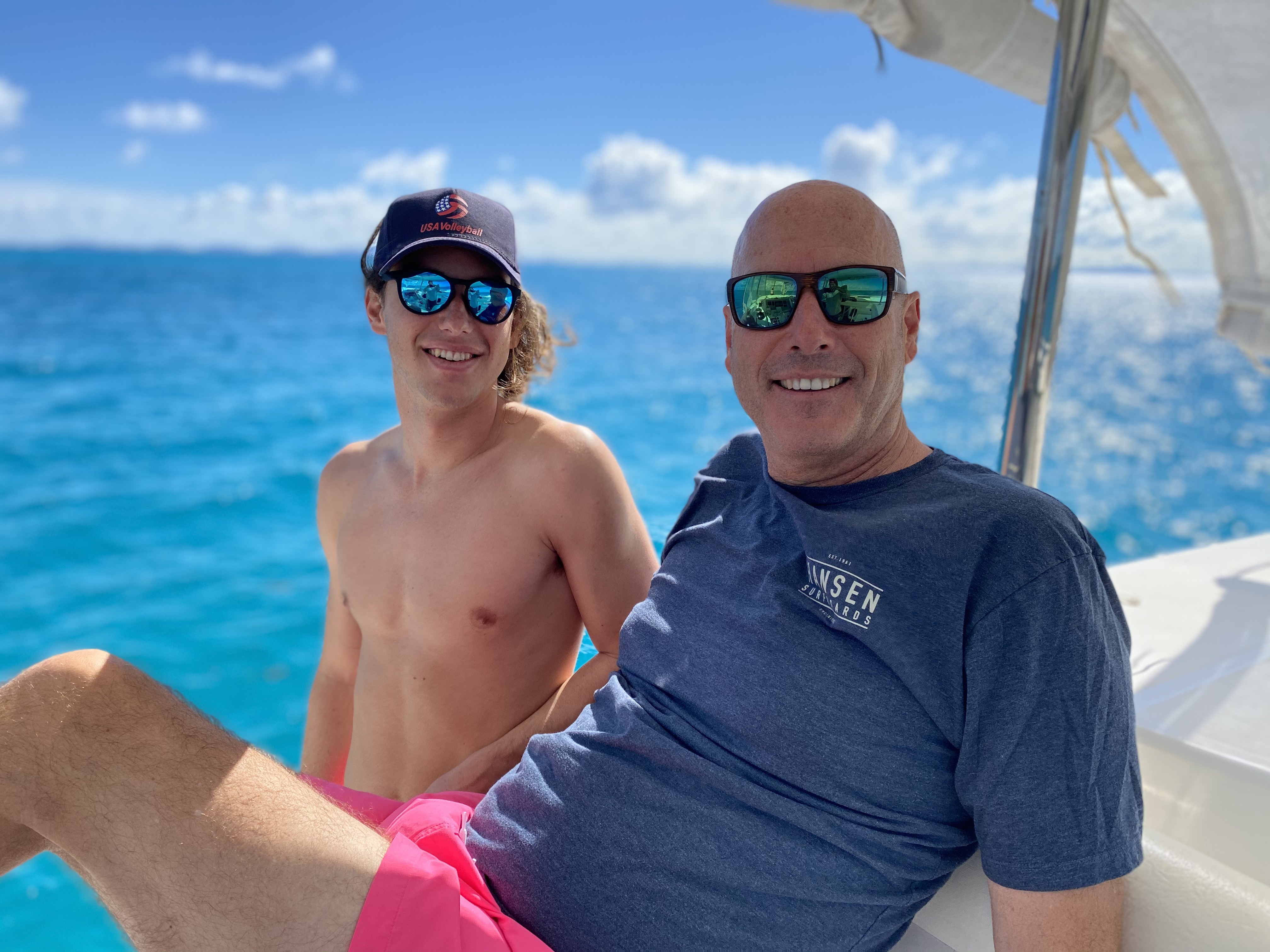
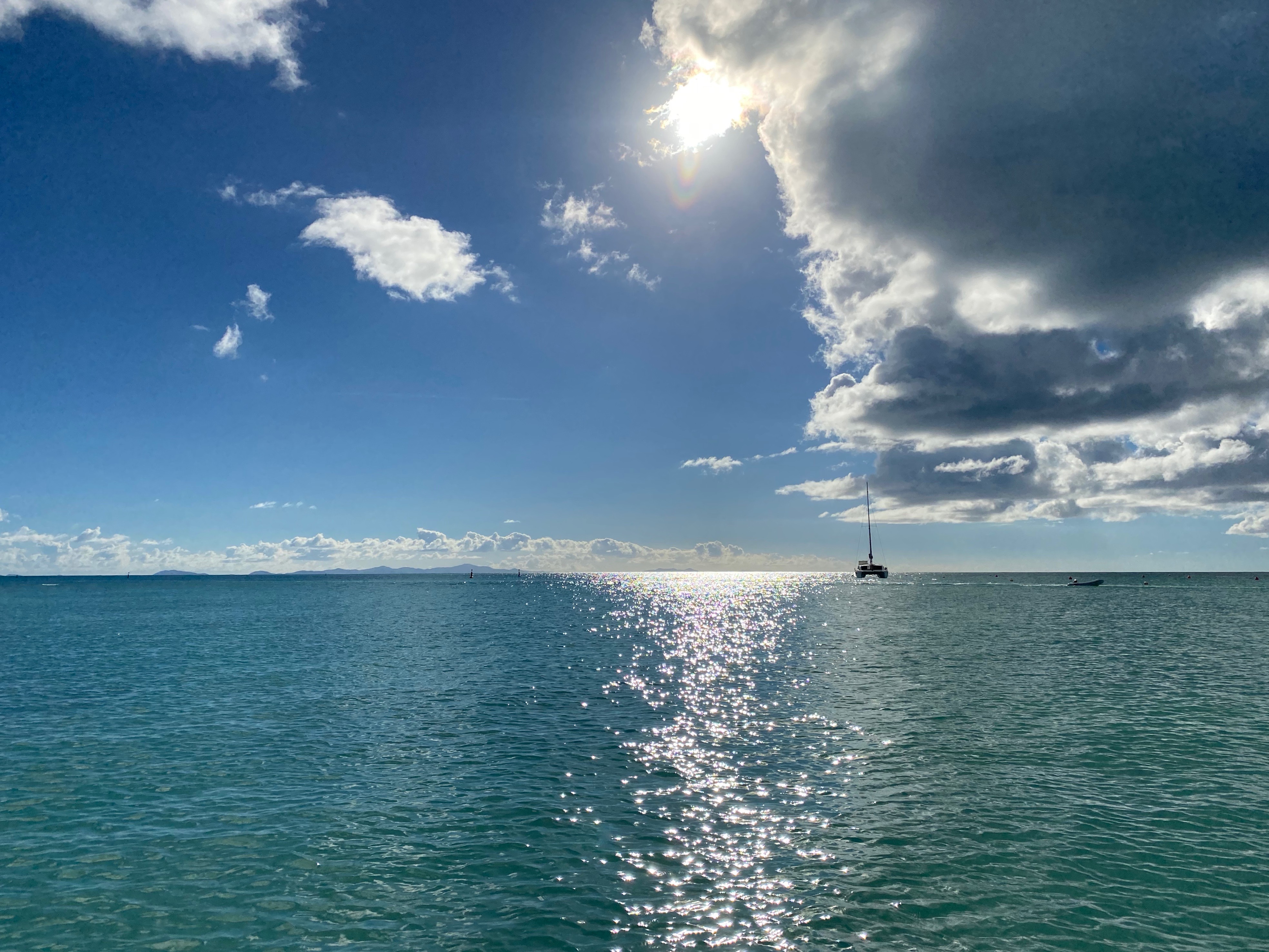
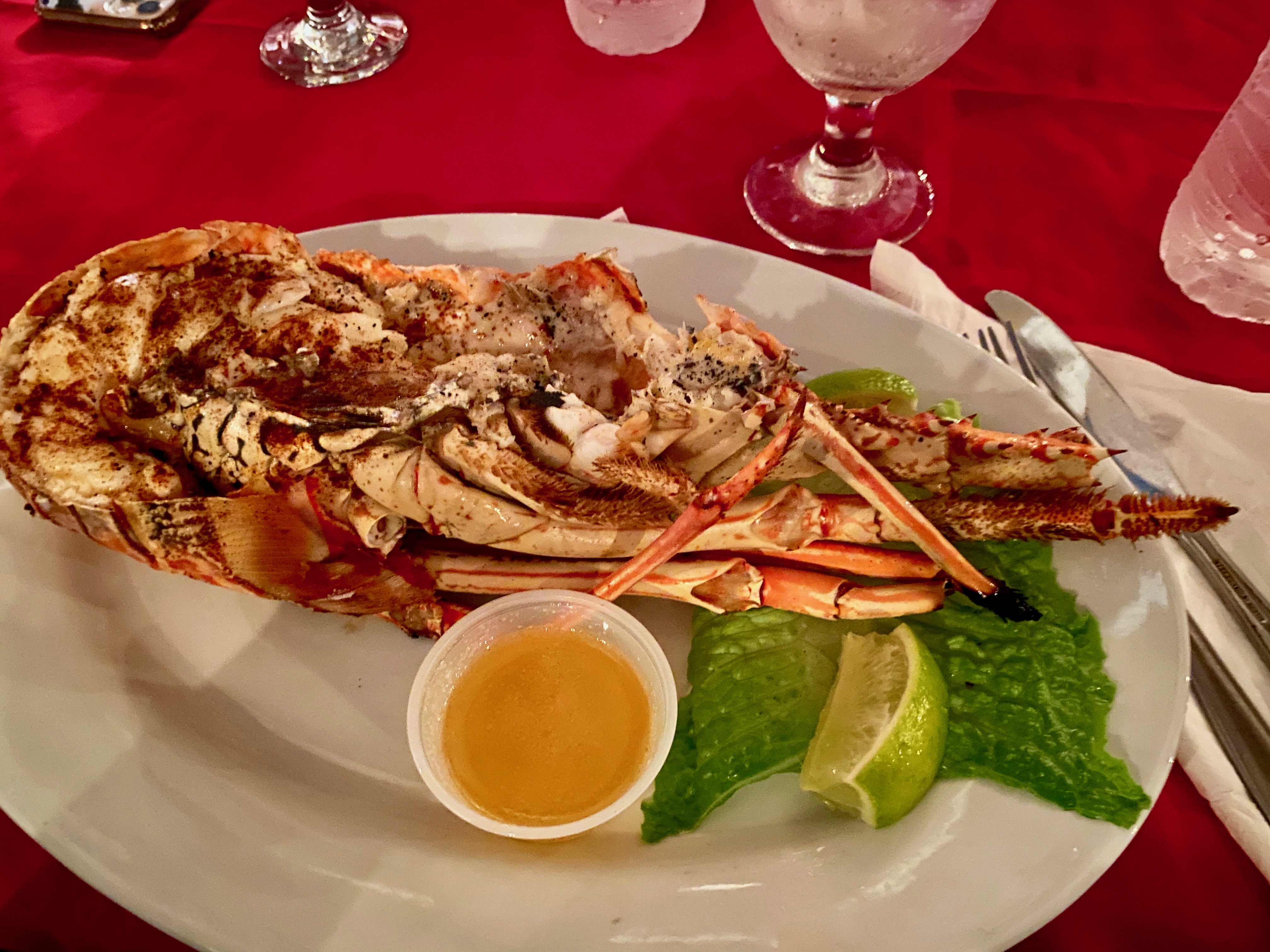
We enjoyed a delicious lobster dinner ashore and more discussion and conversation on the boat. As we repeated this process of choosing an island, charting a course, casting off and so on, it was starting to make sense. The deeper meaning was connecting for all of us, Ortons, Petersons and Johnsons. The younger adults shared how they were thinking about their lives and what they really wanted to do. They were connecting the dots. The parents shared their own fears and concerns and things they would want to do differently. Each persons circumstances and story was unique, but they were seeing a way forward with greater clarity and confidence. I was encouraged. People had sent us kind notes about the online course, but this was different. We were seeing it happen right in front of us, with the actual people, and the hands-on experience of sailing was the tangible metaphor that made meaning of the process we were discussing.
The next day we sailed south, back to the main island chain toward The Baths. The boat sailed smooth and easy, moving quickly at about 10 knots. Roger made French toast for brunch for everyone while underway. Each person was getting a chance at the helm, steering the boat, trying out the autopilot, practicing trimming and tuning the sails. With others manning the helm I sat in the shady threshold between the helm and salon, with the breeze blowing through. My French toast was rich with butter and syrup. This was a good moment. I was glad we came. This was working.

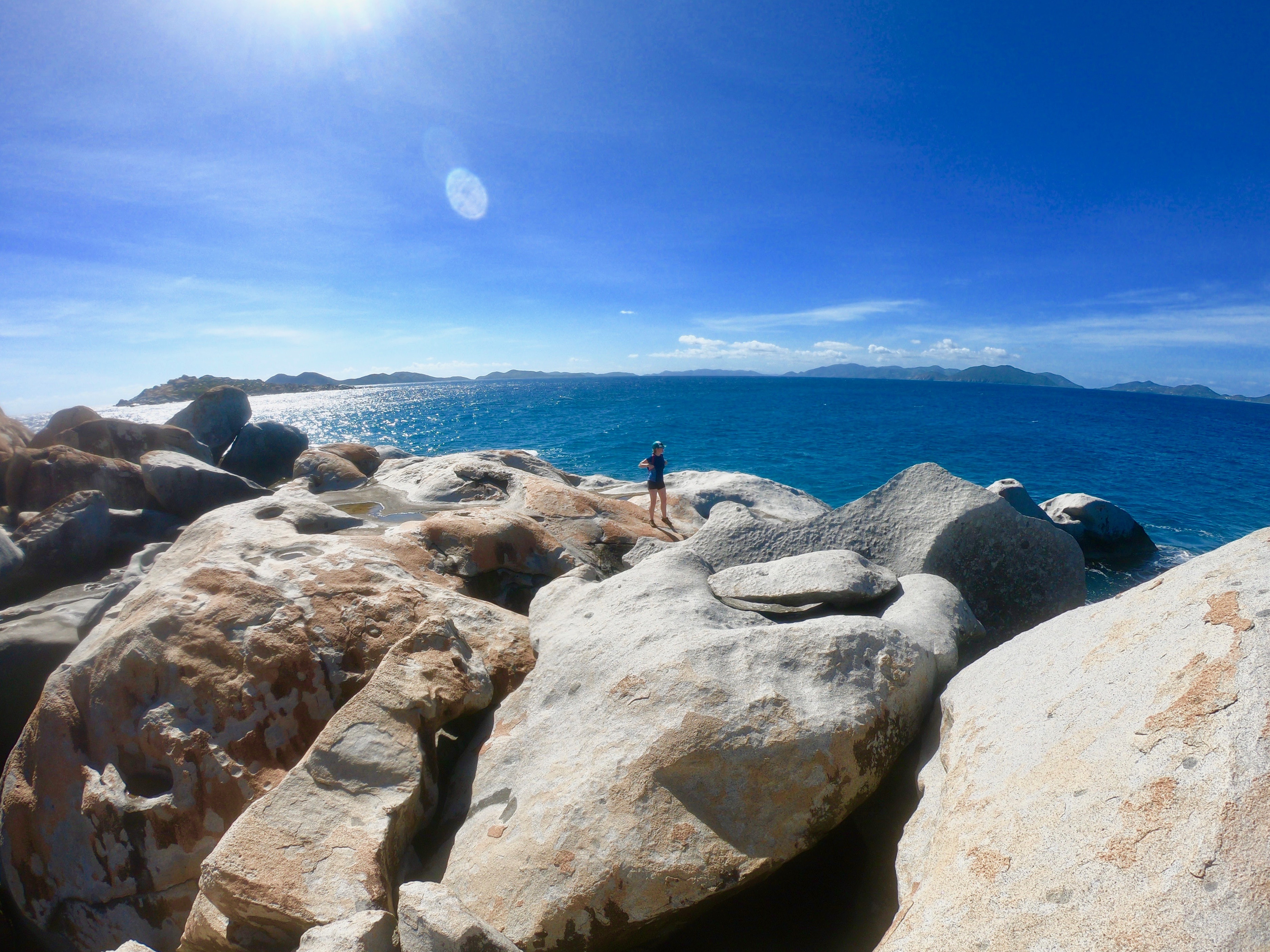
We spent the afternoon at The Baths, swimming ashore, hiking, exploring, swimming, playing. It’s such a magical place. It was a treat to have it to ourselves. There were others around, but very few. I was extra glad we’d fought through and made the effort to be here at this unusual time. It was good for us and good for the locals. They needed boats and sailors passing through, buying groceries, eating at their restaurants, staying at their slips, to help them feed their families. After a glorious afternoon playing on shore, we all swam back to the boat. It was evening and we were tied to a day-only mooring ball. We were moving the boat one bay over where we could anchor for the night.
We dropped anchor, let out the chain and I motored in reverse to set the anchor. However, after diving on the anchor, I saw that it was not set in sand. It was hooked on a rock (not good) and—to make matters worse—our anchor chain crossed an underwater cable that presumably provided power or communications to the island. We couldn’t stay here. We also had to be very careful and lift the anchor without accidentally snagging the underwater cable.
The whole crew rallied and put their new skills to use as we gingerly moved the boat into the right position to gently lift the anchor off the rock, not snag the cable and get ourselves to a safe place to anchor for the night. As we sat down that evening to discuss the final step in the Navigator Framework—dropping anchor—everything came together in a way you can’t plan. As we discussed why it’s so important to drop anchor, everyone was speaking from experience. They’d seen it done and done it themselves over the past several days. They knew what it meant on a boat, and they could see what it would mean in their lives. They were connecting the dots. They were seeing themselves and the world differently. They were changed. This was working. Emily and I mostly listened as they each shared what they’d learned and what they were going to do with it once they got home. They had new ideas, clear direction and fresh confidence. So did I. The sailing had been beautiful. The course material held up. Most importantly, the two together created something magical, something we weren’t sure would happen. But it did. We’d done the same process ourselves with this trip. We’d chosen an island somewhere over the horizon and we’d arrived. We would go home to rest and reflect. And when the time is right, we will venture out again.
Family first doesn't mean Mom + Dad last.
Sign-up for your free Discovery Call to discover your "what if..." and make more more of your midlife.
Get awesomeness in your inbox.
Join our mailing list to receive ideas to make your life even more awesome.
We hate spam too. We will never sell your information, for any reason.

